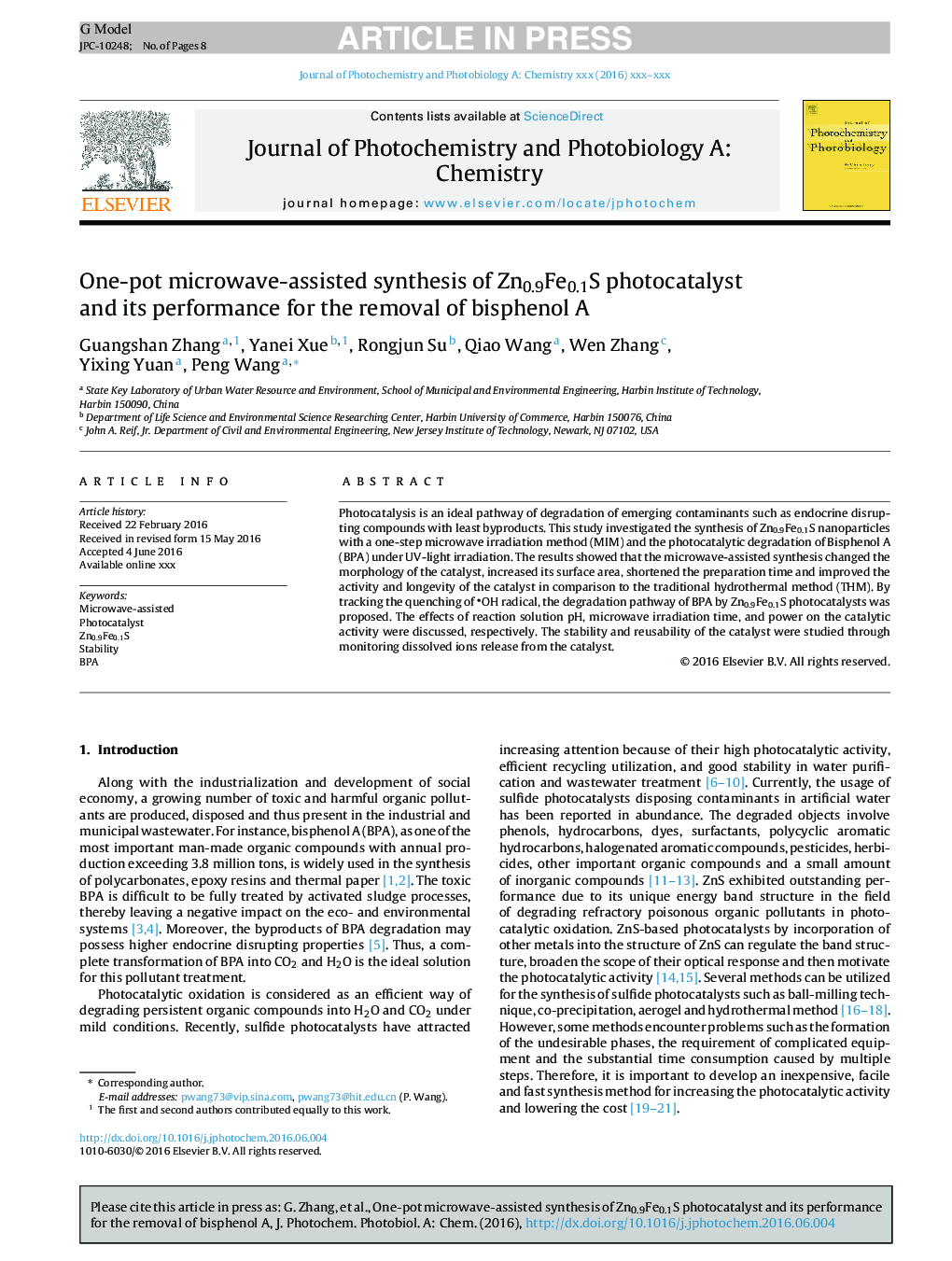| Article ID | Journal | Published Year | Pages | File Type |
|---|---|---|---|---|
| 6492703 | Journal of Photochemistry and Photobiology A: Chemistry | 2018 | 8 Pages |
Abstract
Photocatalysis is an ideal pathway of degradation of emerging contaminants such as endocrine disrupting compounds with least byproducts. This study investigated the synthesis of Zn0.9Fe0.1S nanoparticles with a one-step microwave irradiation method (MIM) and the photocatalytic degradation of Bisphenol A (BPA) under UV-light irradiation. The results showed that the microwave-assisted synthesis changed the morphology of the catalyst, increased its surface area, shortened the preparation time and improved the activity and longevity of the catalyst in comparison to the traditional hydrothermal method (THM). By tracking the quenching of OH radical, the degradation pathway of BPA by Zn0.9Fe0.1S photocatalysts was proposed. The effects of reaction solution pH, microwave irradiation time, and power on the catalytic activity were discussed, respectively. The stability and reusability of the catalyst were studied through monitoring dissolved ions release from the catalyst.
Related Topics
Physical Sciences and Engineering
Chemical Engineering
Bioengineering
Authors
Guangshan Zhang, Yanei Xue, Rongjun Su, Qiao Wang, Wen Zhang, Yixing Yuan, Peng Wang,
